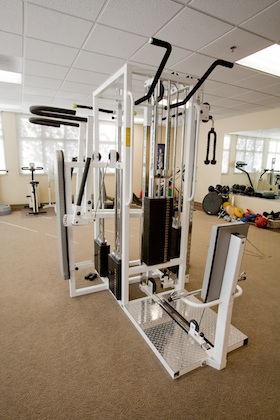This entry is adapted from a talk presented by Physical Therapy of Los Gatos principal Rob Naber at the Western Occupational Health Conference 2005, held September, 2005 in Monterey, California:
Active Range of Motion (AROM) refers to the range of motion for a specific movement that a patient can achieve without assistance, such as a measurement of how far the back moves when a patient bends forward to touch his or her toes. The distance or angle between the starting and finishing position is the AROM. A reduction in AROM can impair routine, vocational, and athletic movements and overall functional capability. Restoring AROM following injury, surgery, or the effects of an illness on the musculoskeletal system is often the goal of physical therapy and the principal reason that many patients are referred to physical therapy.
In the past, physical therapists used goniometers to quantify lumbar AROM. Though practical for AROM measurements around knees and shoulders, the goniometer was of of very limited clinical utility as a means of measuring motions of the spine and surrounding joints. Other tools and methods, such as flexible rulers and measuring tapes, suffered from a lack of precision and reference values, and were also of little diagnostic value.
In 1984, Mayer, et al. proposed a method using specific inclinometer measurements to enable quantification of lumbar forward bending AROM and discrimination between the contributions of the hip and spine to the overall motion. In 1986, Keeley, et al. published a follow-up article that validated the reliability of the inclinometer-based technique and presented the reference values needed to make measurements made in the clinic meaningful.
While necessary as components of a complete evaluation, individual inclinometer measurements of lumbar AROM offer little information of clinical value and should not be used to report degrees of impairment. Multiple inclinometer measurements are necessary to determine the effects of the patient’s starting posture and the relative contributions of hip, pelvis, and lumbar joints to forward and backward bending. A patient can present with a normal lumbar AROM but still suffer from a “weak back” and recurring back pain and disability.
Physical therapy to restore a diminished lumbar AROM is not simply a matter of achieving a specific AROM value. A more nuanced therapeutic goal of restoring ideal ratios between the contributions of involved joints to composite lumbar motions will lead to more rapid and sustained reductions in impairment and more complete and satisfying recoveries.
Lumbar Spine Active Range of Motion: Significance and Relevance in Rehabilitation presentation by Rob Naber to the Western Occupational Health Conference 2005
Western Occupational Health Conference 2005: New Horizons in Occupational Medicine

{ 1 trackback }
Comments on this entry are closed.